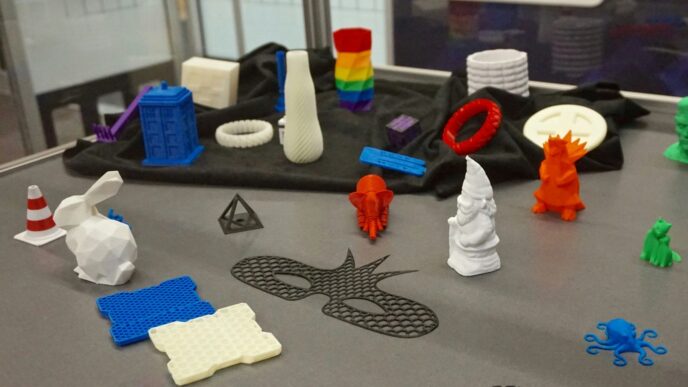You hear a lot about what makes a good leader these days. It seems like everyone has an opinion. But honestly, when you boil it all down, there are really just three main things that matter. We’re talking about the 3 C’s of leadership, and they’re pretty straightforward: character, competence, and communication. Think of them as the building blocks. Get these right, and you’re well on your way to leading effectively. Miss one, and things can get shaky, fast.
Key Takeaways
- Character is the bedrock of leadership, influencing decisions and actions.
- Competence means having the knowledge and skills to do the job, but character determines how you’ll use them.
- Clear, concise, and consistent communication is vital for connecting with and guiding your team.
- Emotional intelligence and interpersonal skills help leaders understand and manage relationships effectively.
- Trustworthiness and coaching ability are key for developing others and building strong teams.
1. Character: The Foundation of Leadership
Think about the leaders you really respect. What makes them stand out? It’s usually not just what they know or what they can do, but who they are. Character is the bedrock of leadership, the stuff that makes people want to follow you. It’s about having a strong moral compass and acting with integrity, even when no one is watching. Without it, even the most skilled person can falter.
When we talk about character in leadership, we’re looking at a mix of traits, values, and virtues. Traits are like your basic personality – are you generally open to new ideas? Values are your core beliefs – what do you hold as right or wrong, like honesty? Virtues are the behaviors that come from those values, like having the courage to speak up or the temperance to stay calm under pressure. These elements combine to shape how you make decisions and interact with the world.
It’s easy to think of some character traits as more important than others. For instance, accountability, drive, and collaboration often get a lot of attention because they’re visible in everyday work. You see them in performance reviews and company values. But what about humility, justice, or temperance? While they might not be as flashy, they are just as vital. For example, a leader with drive but no integrity might end up pursuing goals that only benefit themselves, leading to mistrust. Similarly, courage without temperance can turn into recklessness.
Here are some key aspects of character that matter:
- Integrity: Being honest and having strong moral principles. It means your actions match your words.
- Humility: Recognizing your own limitations and being open to learning from others. It’s about admitting mistakes and not always needing to be the smartest person in the room.
- Accountability: Taking responsibility for your actions and decisions, both good and bad.
- Courage: Having the bravery to do what’s right, even when it’s difficult or unpopular.
- Justice: Treating people fairly and equitably, ensuring everyone has a chance to succeed.
Developing character isn’t a one-time event; it’s a lifelong journey. Every situation you face is an opportunity to practice and strengthen these qualities. It’s about self-awareness – understanding your own tendencies and working to improve. John C. Maxwell, a well-known author on leadership, also emphasizes the foundational importance of character, noting that it influences effectiveness and trust in leadership.
Ultimately, competencies tell us what leaders can do, but character determines what they will do. And that’s the real difference-maker in leadership.
2. Competence: The Ability to Lead
Being competent as a leader isn’t just about knowing your stuff; it’s about being able to actually do the job and guide others effectively. Think of it like being the captain of a ship. You need to know how to steer, understand the weather, and manage the crew. If you’re just guessing or relying on others to do all the heavy lifting, things can go south pretty fast. It’s about having the practical skills and the know-how to make things happen.
What does this look like in practice? Well, it often boils down to a few key areas:
- Problem-Solving: Can you look at a tricky situation and figure out a way through it? This means not just identifying the issue, but also coming up with workable solutions.
- Decision-Making: Leaders have to make calls, sometimes tough ones. Competence means making informed choices, weighing the options, and taking responsibility for the outcome.
- Execution: It’s one thing to have a plan, but another to actually get it done. Competence involves seeing tasks through to completion and making sure things are done right.
Ultimately, a leader’s competence is what builds confidence in their team. When people see that their leader knows what they’re doing and can handle challenges, they’re more likely to trust and follow them. It’s not about being perfect, but about demonstrating a solid grasp of the responsibilities and the ability to lead the team toward its goals. This is especially true when dealing with change; leaders who are competent can help their teams navigate shifts more smoothly, reducing uncertainty and keeping everyone on track. For instance, understanding how to manage spare parts inventory effectively can prevent delays and keep operations running, a clear sign of competence in a field service role [7bb6].
3. Communication: The Art of Connection

Think about it: how often do you feel like you’re really on the same page with someone? That’s where communication comes in, and it’s way more than just talking. It’s about making sure the other person actually gets what you’re trying to say, and that you understand them too. Good communication is the bridge that connects leaders to their teams, making sure everyone’s moving in the same direction. Without it, things get messy, fast.
Clarity in Communication
This is all about making your message easy to understand. No one likes trying to figure out what you mean. Use simple words, avoid fancy jargon that only you understand, and get straight to the point. When you’re clear, people know what to do and why. It builds trust because they know they can rely on you to tell them what’s what. Being consistently clear is a big deal for keeping people engaged.
Conciseness in Communication
Nobody has time to read a novel when a sentence will do. Being concise means cutting out the fluff and sticking to the important stuff. It keeps people focused and prevents them from getting overloaded with information. Think bullet points or short paragraphs. It saves everyone time and makes sure your main idea doesn’t get lost. It’s a skill that communication experts really value.
Consistency in Communication
This is about being reliable. If you say you’re going to do something, do it. If your message changes every other day, people won’t know what to believe. Having a regular way of sharing information, and sticking to it, helps build that trust. It’s like having a consistent brand for yourself – people know what to expect. This helps everyone stay on track and makes sure decisions don’t get muddled. It’s a key part of building strong relationships.
4. Clarity in Communication

Look, nobody likes getting a message that makes them scratch their head. That’s where clarity comes in. It’s basically about making sure the person on the other end actually gets what you’re trying to say, without any of that confusing mumbo jumbo. Think about it – if you’re trying to explain a new process at work, and you start throwing around industry terms nobody understands, you’re just going to get blank stares. The goal is for your message to land exactly as you intended.
So, how do we actually do this? It’s not rocket science, but it does take a little effort. First off, use simple words. Seriously, ditch the fancy vocabulary unless you absolutely have to. If you can say it plainly, do that. Second, organize your thoughts before you start talking or writing. A jumbled message is a recipe for confusion. Think about what you want to say, put it in a sensible order, then share it.
Here are a few pointers to keep things clear:
- Use plain language: Avoid jargon and technical terms that might not be familiar to everyone. If you must use them, explain them.
- Be specific: Vague statements lead to guesswork. Instead of saying "do it soon," try "please complete this by Friday at 5 PM."
- Structure your message: Whether it’s an email or a presentation, having a clear beginning, middle, and end helps people follow along.
- Check for understanding: Don’t just assume people get it. Ask questions like "Does that make sense?" or "What are your thoughts on this?"
Getting your message across clearly is a big part of being a good leader. It helps avoid mistakes and keeps everyone on the same page. It’s like picking the right web hosting service – you need to make sure it fits your needs perfectly so everything runs smoothly. When your communication is clear, people trust you more, and that’s a huge win.
5. Conciseness in Communication
Think about the last time you got a super long email. Did you read it all? Probably not. That’s where conciseness comes in. It’s all about getting your point across without all the extra fluff. Leaders who are concise respect their team’s time and make sure the important stuff isn’t buried under a mountain of words. It’s not about being brief just for the sake of it; it’s about being effective.
Why Being Concise Matters
- Saves Time: When messages are to the point, everyone spends less time reading and processing. This means more time for actual work.
- Improves Understanding: Cutting out jargon and unnecessary details makes the core message easier to grasp. No one has to guess what you mean.
- Boosts Engagement: People are more likely to pay attention to messages that are clear and don’t feel like a chore to get through. It keeps them interested.
How to Be More Concise
- Get to the Point: Start with your main idea. Don’t build up to it slowly. Think of it like getting straight to the good part of a story.
- Cut the Clutter: Read through your message and remove any words or sentences that don’t add real value. If you can say it in fewer words, do it. This is a skill that gets better with practice, like learning to optimize computer performance.
- Use Structure: Bullet points or short paragraphs can break up information and make it easier to digest. It helps guide the reader through your message.
Being concise isn’t just about shorter sentences; it’s about making sure your message lands effectively and is remembered. It’s a key part of communicating well, and it really makes a difference in how people respond to you.
6. Consistency in Communication
Think about it: if you tell your team one thing today and something totally different tomorrow, what are they supposed to do? It’s like trying to follow a recipe where the ingredients keep changing. That’s where consistency in communication comes in. It’s not just about saying the same thing over and over; it’s about making sure your message stays the same, no matter who you’re talking to or which channel you’re using. This builds trust, plain and simple. When people know what to expect from your communication, they can rely on it. It helps everyone stay on the same page, which means fewer mix-ups and less wasted effort.
Establishing a Communication Style Guide
To keep things steady, it’s a good idea to have a sort of guide for how you communicate. This could include things like the general tone you want to use, the kind of words that are okay and those that aren’t, and even how you format your messages. Having these guidelines helps make sure that whether you’re sending an email, posting on a company chat, or giving a presentation, the core message and feel are the same. It’s a way to make your communication recognizable and reliable.
Using Standardized Templates and Formats
Another practical step is to use templates. If you have a standard format for reports, meeting minutes, or even just internal announcements, it makes the information easier to digest and compare. People know where to look for key details because they’re always in the same spot. This saves time and reduces the chance of important information getting lost in a sea of different layouts. It’s a simple way to make sure your messages are presented in a predictable way, which is a big part of effective communication.
Regularly Reviewing and Updating Materials
Things change, right? New products come out, policies get updated, or maybe you just find a better way to explain something. That’s why it’s important to go back and look at your existing communication materials regularly. Are they still accurate? Do they still reflect what you want to say? Keeping them current means your team and others you communicate with are always getting the most up-to-date information. It’s like making sure your maps are always showing the latest roads.
Seeking Feedback for Improvement
Don’t be afraid to ask people how your communication comes across. Sometimes, what seems clear to you might be confusing to someone else. Getting feedback from your team or even trusted colleagues can highlight areas where your message might be inconsistent or unclear. They can point out things you might have missed, helping you adjust your approach and make your communication stronger and more reliable over time.
7. Emotional Intelligence
Emotional intelligence, often called EI or EQ, is basically how well you can understand and manage your own feelings, and then do the same for other people. It’s not just about being nice; it’s about being aware and responsive. Think about it – if you can’t get a handle on your own stress, how are you supposed to help your team through a tough project? Leaders with high EI tend to be better at handling pressure, sorting out disagreements, and generally making the workplace a more positive place to be. It really helps build a solid team culture.
Here’s a breakdown of what makes up emotional intelligence:
- Self-awareness: Knowing your own strengths and weaknesses. It’s like having a clear picture of yourself, including what makes you tick and what sets you off.
- Self-regulation: This is about controlling your impulses and managing your emotions. Instead of flying off the handle, you can pause and think before reacting.
- Motivation: People with high EI are usually driven. They have that internal push to achieve goals, not just for external rewards.
- Empathy: This is the ability to understand and share the feelings of others. It means putting yourself in someone else’s shoes and really trying to see things from their perspective. It’s a big part of connecting with people.
- Social skills: These are the abilities that help you interact well with others. It includes things like good listening, clear communication, and being able to build rapport. It shows you genuinely care about and respect the people you work with.
Developing these skills isn’t a one-time thing; it’s an ongoing process. For instance, practicing active listening during team meetings can really help you understand different viewpoints. You can also try to be more mindful of your reactions during stressful situations. Learning to manage your emotions effectively is a key part of leadership development.
8. Interpersonal Skills
So, we’ve talked about character and competence, but what about actually getting along with people? That’s where interpersonal skills come in. Think of them as the glue that holds everything together. It’s not just about being nice; it’s about understanding how to interact with different folks in various situations. This means really listening when someone talks, not just waiting for your turn to speak. It also involves giving and taking feedback without getting all defensive, and paying attention to what people aren’t saying with their words, you know, the body language stuff.
Active Listening
This is more than just hearing words. It’s about focusing completely on the speaker, understanding their message, and responding thoughtfully. Try to paraphrase what they said to make sure you got it right. It shows you’re paying attention and care about what they’re saying.
Giving and Receiving Feedback
When you give feedback, be specific and focus on the behavior, not the person. For example, instead of saying "You’re lazy," try "I noticed the report wasn’t finished by the deadline." When you receive feedback, try not to interrupt. Listen openly, ask clarifying questions, and thank the person for their input. It’s a chance to grow, even if it’s tough to hear sometimes.
Empathy and Sensitivity
This is about putting yourself in someone else’s shoes. Everyone has different backgrounds and experiences, so what might seem obvious to you could be confusing or difficult for someone else. Being sensitive means recognizing these differences and adjusting your approach. It helps build stronger relationships and avoids misunderstandings. It’s about treating people with respect, no matter what.
Teamwork and Collaboration
Good leaders know how to work with others to achieve a common goal. This involves sharing ideas, supporting team members, and resolving conflicts constructively. It’s about making sure everyone feels like they’re part of the team and that their contributions matter. Building a strong team often means looking at how you can improve your own social media presence to better connect with your audience, which can translate to better team dynamics too.
9. Coaching Ability and Trustworthiness
Being a good coach means more than just telling people what to do. It’s about helping them figure things out for themselves. This involves knowing when to give someone a nudge to step outside their comfort zone and offering feedback that actually helps them grow. When you coach effectively, you build trust, and that trust is the bedrock of any strong leader-team relationship. It’s about helping individuals tap into their own strengths to get the job done.
Trust is built on authenticity, clear reasoning, and empathy.
Think about it: people are more likely to follow someone they believe in. That belief comes from seeing you be real, understanding your thought process, and knowing you care about their perspective. It’s not about being liked, but about being respected for who you are and how you operate. Building this kind of influence takes time and consistent effort, but the payoff in team performance and loyalty is huge. It’s about focusing on building trust rather than seeking to be liked, which is key to genuine influence.
Here’s what goes into being a trustworthy coach:
- Authenticity: Being true to yourself, even when it’s tough.
- Rigor in Logic: Clearly explaining your reasoning so others can follow.
- Empathy: Actively listening and trying to see things from others’ points of view.
When leaders show these qualities, they create an environment where people feel safe to learn, take risks, and ultimately, perform better. It’s a cycle: good coaching builds trust, and trust allows for better coaching.
10. Sportsmanship
Think about sportsmanship. It’s not just about being a good winner; it’s also about how you handle things when they don’t go your way. In leadership, this means staying calm and professional when plans fall apart or when you face setbacks. Instead of getting angry or blaming others, a leader with good sportsmanship looks for solutions and keeps the team focused. It’s about maintaining a positive attitude, even when things are tough. This kind of resilience is contagious and helps your team push through challenges too. It’s about being a good example, showing that you can take a hit and still move forward with grace. This significantly enhances team dynamics by fostering effective communication, trust, and collaboration. It strengthens team bonds and contributes to a positive and supportive environment, ultimately leading to improved performance and a more cohesive unit.
Here’s what good sportsmanship in leadership looks like:
- Keeping a level head: Not losing your cool when things go wrong.
- Focusing on solutions: Shifting from problems to what can be done next.
- Avoiding blame: Not pointing fingers when mistakes happen.
- Showing respect: Treating everyone fairly, win or lose.
- Encouraging others: Lifting up your team, especially after a tough time.
It’s a key part of being a leader that people can count on, and it really helps build a strong team culture. You can learn more about developing leadership competencies that drive business success.
Putting It All Together
So, we’ve talked a lot about character, competence, and communication. It’s not just about having the right skills or knowing what to do. It’s about who you are when you do it. Having solid character means people can count on you, even when things get tough. Being competent means you actually know your stuff and can get the job done right. And communication? Well, that’s how you get everyone else on board and moving in the same direction. When you mix these three things – character, competence, and communication – you’re not just a leader, you’re a leader people want to follow. It’s a constant effort, sure, but building these qualities is how you really make a difference and achieve lasting success, both for yourself and for the people you lead.
Frequently Asked Questions
What exactly is ‘character’ in leadership?
Think of character as your inner compass. It’s about being honest, fair, and doing the right thing, even when it’s tough. Good leaders have strong character, which means people trust them and believe in them.
What does it mean for a leader to be ‘competent’?
Competence means having the skills and knowledge to do your job well. For leaders, this includes understanding their field, making smart decisions, and knowing how to guide a team to get things done.
Why is ‘communication’ so important for leaders?
Communication is how leaders share ideas and connect with people. It’s about speaking clearly, listening well, and making sure everyone understands the message. Good communication helps teams work together smoothly.
What’s the best way to make my communication ‘clear’?
Being clear means your message is easy to understand, with no confusing words or ideas. It’s like telling a story without making it too complicated so everyone gets the main point.
How can I be more ‘concise’ when I talk or write?
Concise communication is about getting straight to the point. It means using only the words you need and leaving out anything extra. This helps people pay attention and remember what’s important.
What does ‘consistent communication’ mean, and why does it matter?
Consistency in communication means saying the same thing over time and in the same way. It helps build trust because people know what to expect. It’s like a catchy song that you hear the same way every time.














